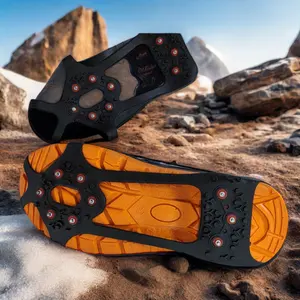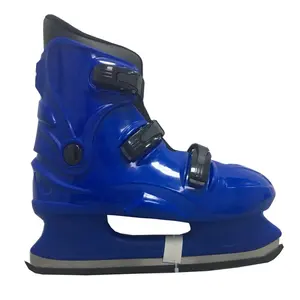Ice skating shoes, also known as ice skates, are specialized footwear designed for gliding and maneuvering on ice surfaces. They feature a hardened steel blade attached to the sole, which reduces friction, enabling smooth movement. The two primary categories of skating shoes for ice, figure skates and hockey skates, cater to different skills and styles of ice skating. Figure skates are distinguished by their toe picks and longer, straighter blades intended for precision and control, while hockey skates provide speed and agility with their curved blades and robust design. Regardless of type, proper fit and quality construction are crucial for optimal performance and safety. The boot's lining material significantly influences comfort and performance. Options such as heat-moldable synthetic materials or natural leather can be chosen based on preference. Lastly, the lace closure system plays a vital role in fit and support. Traditional eyelet lacing offers robust, adjustable support, while quick-lace systems enable fast and easy adjustments. These various customization options ensure ice skates can be precisely tailored to meet the unique requirements of each skater.
Exploring the design features of ice skating shoes
Figure skating shoes boast a unique blend of design features aimed at enhancing performance on the ice. The central component is the blade, typically made from high-quality steel, divided into two edges with a hollow groove in between. This dual-edge design aids in maintaining balance and offers precise control while skating. An interesting attribute is the curvature of the blade, termed the 'rocker,' which influences the skater's speed and stability. A shorter rocker aids in quick, agile movements, while a longer one ensures better stability and smooth gliding.
The structure of ice skating shoes is meticulously designed, offering maximum ankle support, which is a critical aspect of stability on ice. Figure skates come with a distinguishing feature known as 'toe picks' at the front of the blade, providing skaters with the ability to perform jumps and other intricate maneuvers. Hockey skates, on the other hand, lack toe picks and have a more rounded blade design to accommodate swift, multi-directional movements. The interior of these shoes is typically lined with padding for shock absorption and additional comfort, while the outer shell is made of durable materials to withstand rigorous use.
Importance of fit and construction in ice skating shoes
Shoe ice skates require a precision fit and sturdy construction to ensure safety and enhance performance on the ice. An accurate fit is crucial for maintaining balance and control during skating. Shoes that are too loose might fail to provide adequate support, increasing the risk of injuries, while those that are too tight can cause discomfort and hinder movement. To achieve an optimal fit, figure skate boots often feature lace-up closures, enabling a tight yet adjustable grip. The inner part of the shoe is designed with sufficient padding for cushioning, and the insole contours are meant to accommodate the unique shape of each foot.
The construction of ice skating shoes is equally important. The outer shell should be crafted with robust materials capable of withstanding the rigors of skating, such as hard plastics, leather, or composites. These materials need to offer resilience for protection against impact and durability for extended use.










































 浙公网安备 33010002000092号
浙公网安备 33010002000092号 浙B2-20120091-4
浙B2-20120091-4